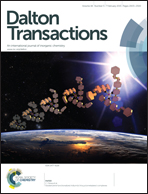Transition metal complex assisted Csp3–F bond formation
Abstract
Fluoroorganic compounds have attracted significant attention in various fields, such as pharmaceutical, agricultural chemistry, and materials science, as a result of their unique physical, chemical, and physiological properties. Consequently, extensive efforts have been devoted to the site-specific synthesis of organofluorine compounds. In recent years, transition-metal-mediated C–F bond formation has emerged as a powerful method for fabrication of these compounds. This Perspective mainly focuses on the most recent advances in transition-metal-assisted synthesis of alkyl fluorides.


 Please wait while we load your content...
Please wait while we load your content...